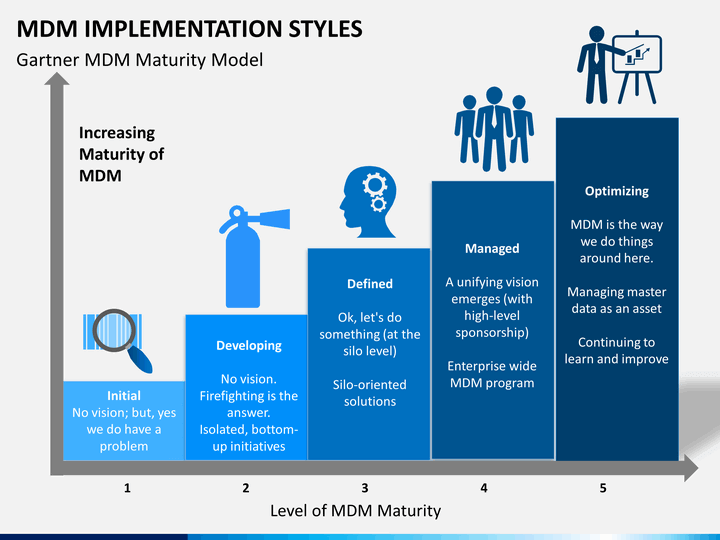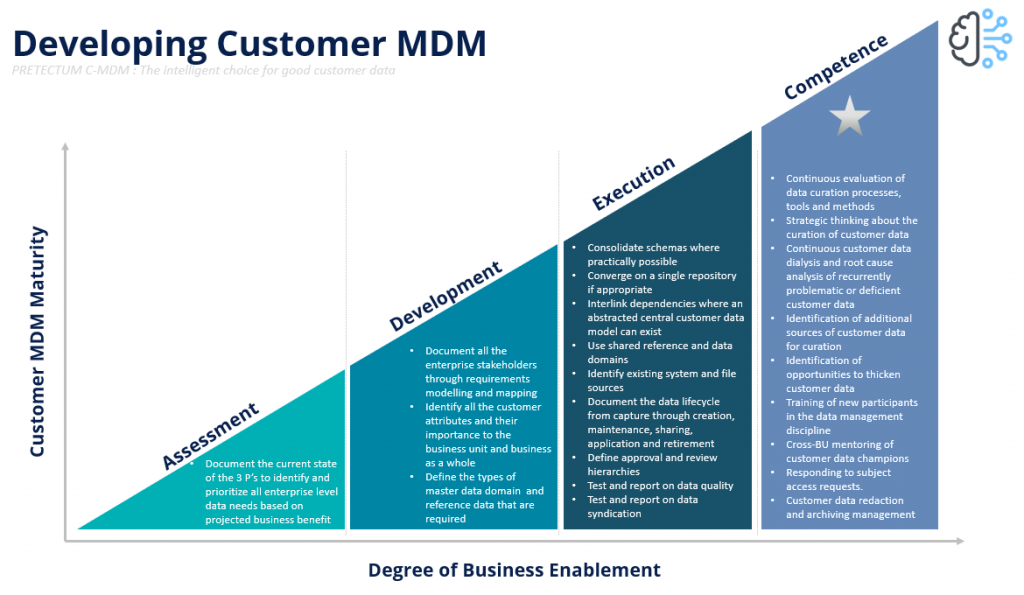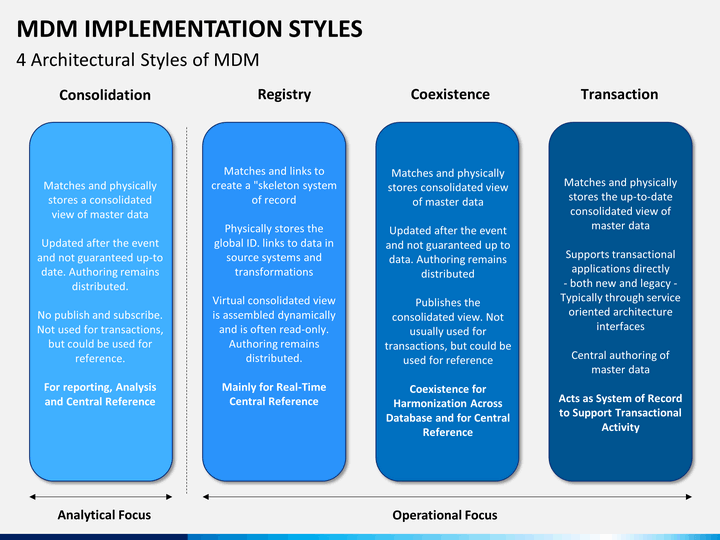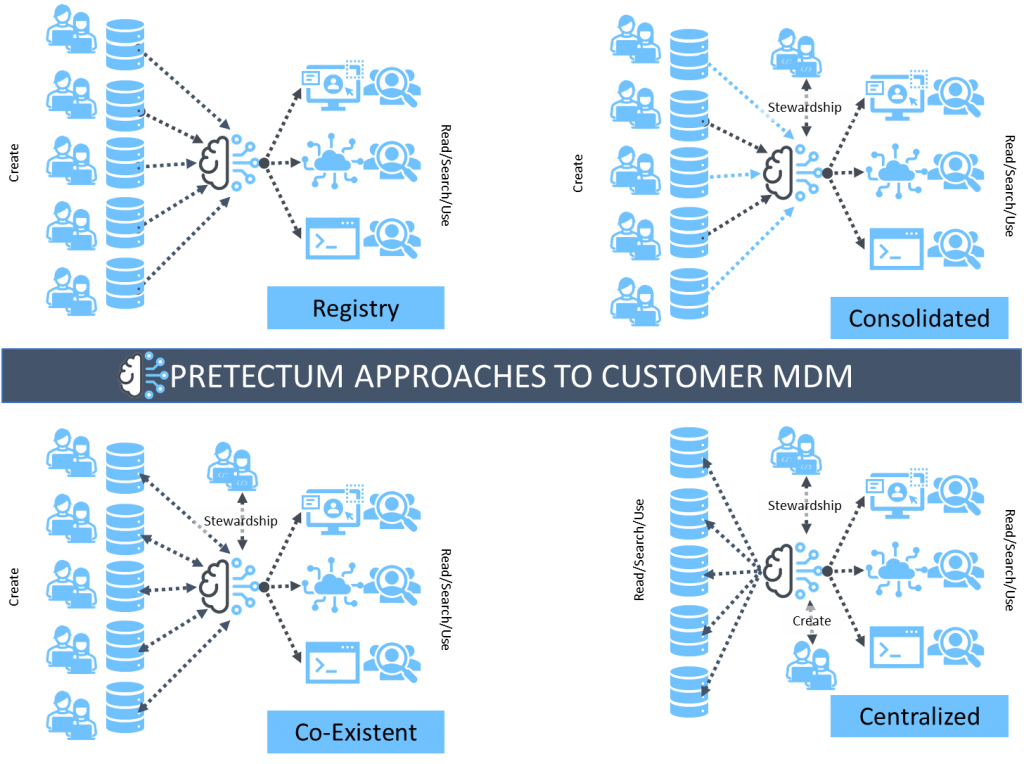Digital Transformation is very popular as a goal currently. Exactly what it is though, can be confusing and ambiguous. Digital transformation is a catch-all term that squarely lands in the world of sales and marketing buzzword bingo.
The scope of issues, functions, technologies and efforts around digital transformation are vague, and the term seems to mean something different for every organization. One thing that is pervasive though, is the message. A message that embraces the idea that your business should be digitising as much of its data and activities as practically possible.
For customer master data management there is a high interdependency between a digital transformation strategy and customer data management.
The ability to have a solid basis for the customer master is a critical part of any digital transformation strategy.
How you execute on customer master data management as a part of digital transformation is the critical piece of the puzzle that holds the potential for maximal organizational value.
What is digital transformation exactly?
As mentioned, the term “digital transformation” can mean anything and everything depending on who is pronouncing it and who the audience is. It can encompass tools, technology, business processes, customer experience, machine learning, and artificial intelligence, and accompany every other contemporary buzzword that marketers and promoters can come up with.
The ‘semi-official’ definitions from industry analysts and technology vendors include digitizing manual processes and records, modernizing the IT function or moving to cloud technologies, putting services online and accessible outside of the corporate network; developing new business models and taking a “digital-first” approach. This last piece is important, because when we consider it in relation to the creation and maintenance of customer records and record-keeping that may mean creating new business processes and overhauling or devising new customer experiences and ways for your business to engage with customers.
Digital transformations tend to be expensive, broad swathe and highly strategic with the impact expected to be felt in many areas of the business. Bricks and mortar businesses moving a fair portion of their business strategy to online, for example, might be considered a critical element of a digital transformation strategy,
The end-to-end customer experience may see transformations in every aspect of the customer engagement model from campaign construction, through lead accumulation, lead nurture, identify, contact, needs assessment, qualification, opportunity establishment, proposal, quote, order, bill, fulfil, collect and support. A great deal of technology-based solutions may be involved along the way and many systems. These may include CDPs, CRMs, ERPs, back-office technologies, aggregation services and a host of configurable technologies that support business processes. The goal, in the end, is to reduce the amount of friction associated with contracting with customers. The challenge is the complexity of the whole end-to-end process and the level of effort and solutions required to achieve the end goal.
Some digital transformation initiatives will attempt to boil the ocean in the pursuit of a friction-free engagement model, others will be more incremental, progressive and pragmatic. One trait that any customer-related digital transformation initiative will fail or succeed in, is the quality of the customer master data management process. Though a high degree of data curation with quality at the customer master level, cannot guarantee success, it is almost certainly true that light curation accompanied by potentially low-quality data will almost certainly lead to failure to meet the goals of the program.
Customer master data management is foundational and often not directly tied to an ROI. Identifying intermediate wins from improved data quality and more comprehensively or flexible data curation can be evaluated in the context of OKRs. These, in turn, can be leading indicators that can feed into desired outcomes which in turn will fuel ROI measures.
To learn about the Pretectum approach to Customer Master Data Management and work out whether you can take advantage, why not contact us?








